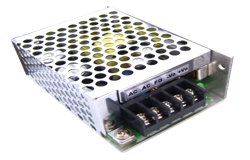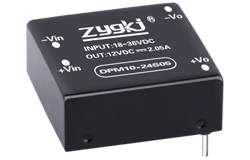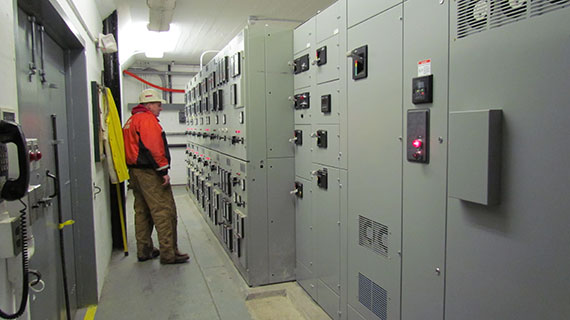nyheder
Exploring the functionality and advantages of bidirectional converters
Author: ZYG Power Module Time: 2023-6-3
In today’s world of electronics, the need for efficient power management is rapidly increasing. With the growing demand for renewable energy sources, bidirectional converters have become a crucial component in energy storage systems, electric vehicles, and microgrids. Bidirectional converters are devices that can convert DC power into AC power and vice versa. They are designed to be able to transfer power in both directions, making them highly versatile and essential in applications that require efficient power management.
Bidirectional converters can be classified into two types: AC-DC and DC-DC converters. AC-DC converters are used to convert AC power to DC power, while DC-DC converters convert DC power to DC power. The main advantage of bidirectional converters is their ability to transfer power between two different sources, allowing for energy flow control and management. This makes them ideal for applications where energy storage is required, such as in electric vehicles and microgrids.
The functionality of bidirectional converters is based on a switching process that involves the use of power electronics. The switching process allows for the control and management of energy flow in both directions. In AC-DC converters, the AC power is first converted to DC power using a rectifier. The DC power is then fed into a DC-DC converter where it is regulated and converted to the required voltage and current. In DC-DC converters, the DC power is first converted to AC power using a DC-AC inverter. The AC power is then fed into an AC-DC rectifier where it is rectified and converted to the required voltage and current.
One of the main advantages of bidirectional converters is their high efficiency. They are designed to minimize energy loss, making them ideal for applications where energy conservation is essential. Bidirectional converters use advanced control algorithms and power electronics to ensure that energy is transferred efficiently between the two sources. This helps to reduce the overall energy consumption, resulting in significant cost savings.

Another advantage of bidirectional converters is their flexibility. They can be used in a wide range of applications, including renewable energy systems, electric vehicles, and microgrids. They are also highly scalable, making them suitable for both small and large-scale applications. This flexibility makes them ideal for use in emerging markets where there is a need for reliable and efficient power management systems.
Bidirectional converters are also highly reliable. They are designed to operate in harsh environments and can withstand temperature variations, humidity, and other environmental factors. They are also designed to be fault-tolerant, ensuring that they continue to operate even in the event of a failure. This high level of reliability makes them ideal for use in critical applications where downtime can be costly.
In conclusion, bidirectional converters are an essential component in energy management systems. They offer high efficiency, flexibility, and reliability, making them ideal for a wide range of applications. As the demand for renewable energy sources continues to increase, bidirectional converters will play a crucial role in ensuring efficient and reliable power management systems.
Tidligere: 120V AC to 12V DC Converter: Transforming Voltage for Optimal Power Usage
Næste: ZP Series AC DC Converter: Efficient and Reliable Power Conversion Solution
relevant information
-
2023-7-11
ZP Series AC DC Converter: Efficient Power Conversion Solution
Introduction: In today's technologically advanced world, the demand for efficient power conversion solutions has never been higher. The ZP Series AC DC Converter is a revolutionary product that offers a reliable and efficient solution for converting alternating current (AC) to direct current (DC). This article will delve into the features, benefits, and applications of the ZP Series AC DC Converter, highlighting its significance in various industries. Features: The ZP Series AC DC Converter boasts an array of features that make it a standout choice for power conversion needs. Firstly, it offers a wide input voltage range, making it compatible with various power sources. This flexibility ensures that the converter can be used in diverse environments without any issues. Additionally, the...
Se detaljer -
2023-6-23
HP Series AC DC Converter: Efficient and Reliable Power Conversion Solution
The HP Series AC DC Converter is a highly efficient and reliable power conversion solution that provides a seamless transition from alternating current (AC) to direct current (DC). This converter is ideal for a range of applications, including industrial manufacturing, medical equipment, and telecommunications. Efficiency The HP Series AC DC Converter boasts an impressive 94% typical efficiency rating, which means that it converts AC power to DC power with little loss. This high level of efficiency results in lower energy consumption and reduced energy costs, making it an attractive option for businesses looking to reduce their carbon footprint. Reliability The HP Series AC DC Converter is designed to withstand harsh operating conditions, making it an extremely reliable power conversion solution....
Se detaljer -
2023-6-26
24V AC to DC Converter: Efficiently Transforming Alternating Current to Direct Current
In many electrical systems, it is necessary to convert alternating current (AC) to direct current (DC). This is particularly true in applications such as automotive electronics, where a steady voltage supply is required for powering various electrical components. One of the most commonly used devices for converting AC to DC is the 24V AC to DC converter. The 24V AC to DC converter is a device that transforms the incoming AC voltage into a steady DC voltage output. This conversion can be achieved through a number of different techniques, including rectification, smoothing, and filtering. The first step in the conversion process is rectification, which involves converting the AC voltage into a pulsating DC voltage. This is done using a diode...
Se detaljer -
2023-4-25
Building a 120V AC Power Supply for 3V DC Output
Introduction In this project, we will be designing a 120V AC power supply that will convert the high voltage AC input to a low voltage DC output of 3V. The power supply will be used to power small electronic devices that require a low voltage DC supply. Design The first step in designing the power supply is to select the components required for the circuit. We will be using a step-down transformer to reduce the high voltage AC input to a low voltage AC output. The AC output will then be rectified using diodes, and the resulting DC voltage will be filtered using capacitors to remove any residual AC ripple. Finally, the regulated DC voltage will be produced using a...
Se detaljer -
2023-5-12
How to convert AC to DC power 12V?
Introduction Alternating current (AC) is a type of electrical current that flows back and forth in a circuit. Direct current (DC), on the other hand, flows in a single direction. While many household appliances and electronics run on DC, the power that comes out of a wall socket is AC. Therefore, to use these appliances and electronics, you need to convert AC to DC power. In this article, we will explain how to convert AC to DC power, specifically 12V DC. We will discuss the different types of AC to DC converters, step-by-step instructions on how to convert AC to DC power, and some safety tips to keep in mind while doing so. Types of AC to DC Converters There...
Se detaljer -
2023-5-31
24V AC to DC Converter: Efficient Power Conversion for Your Electrical Needs
In today's modern world, electrical devices have become an essential part of our lives. From smartphones to computers, refrigerators to air conditioners, we rely on these devices to make our daily lives easier and more comfortable. However, all these devices require a steady supply of power to function properly. While some devices are designed to run on batteries, others need to be connected to an electrical outlet to operate. This is where an AC to DC converter comes into play. An AC to DC converter is an electronic device that converts alternating current (AC) to direct current (DC). This device is commonly used in electronic devices that run on DC power, such as laptops, smartphones, and other gadgets. In simple...
Se detaljer


















